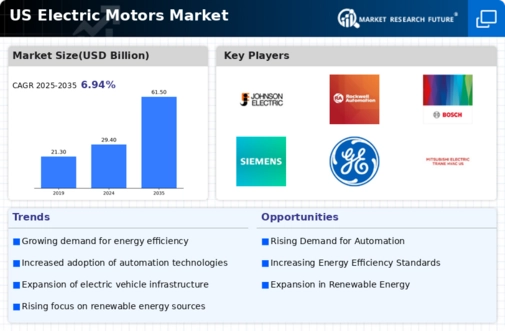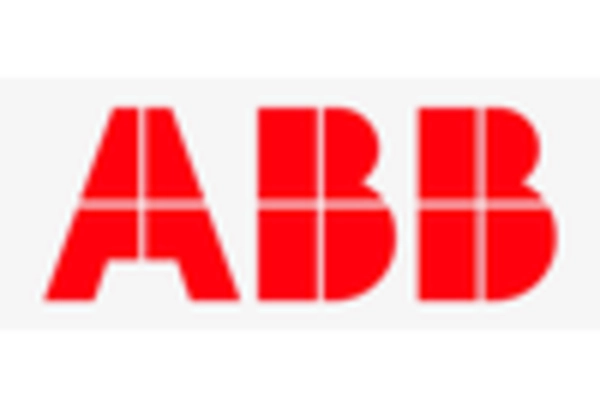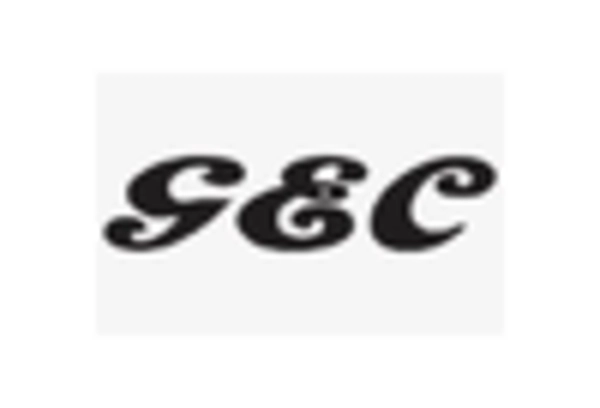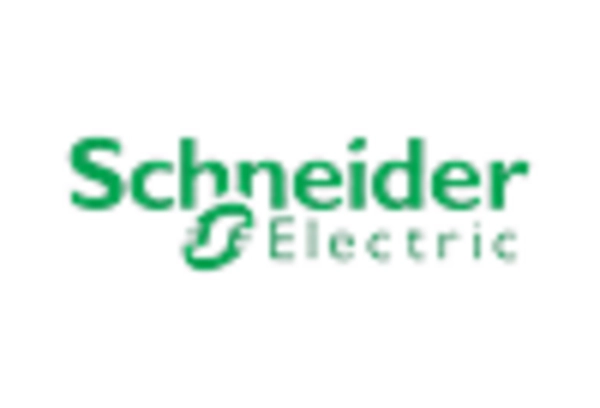Growth in Renewable Energy Sector
The electric motors market is poised for growth as the renewable energy sector expands in the United States. With a strong push towards wind and solar energy, electric motors are essential components in various applications, including wind turbines and solar tracking systems. The U.S. Department of Energy indicates that renewable energy sources accounted for approximately 20% of the total electricity generation in 2023, a figure that is expected to rise. This growth in renewable energy not only drives demand for electric motors but also encourages innovation in motor efficiency and performance. As the electric motors market adapts to these changes, it is likely to see increased investment and development in advanced motor technologies.
Industrial Automation and Robotics
The electric motors market is significantly influenced by the rise of industrial automation and robotics in the United States. As manufacturers seek to enhance productivity and reduce operational costs, the integration of electric motors in automated systems becomes increasingly vital. The market for industrial robots is projected to grow at a CAGR of over 10% through 2026, indicating a robust demand for electric motors. These motors are integral to the functioning of robotic arms, conveyor systems, and other automated machinery. Consequently, the electric motors market is likely to experience a surge in demand as industries embrace automation to remain competitive in a rapidly evolving market.
Rising Adoption of Electric Vehicles
The electric motors market is experiencing a notable boost due to the increasing adoption of electric vehicles (EVs) across the United States. As consumers and manufacturers alike prioritize sustainability, the demand for electric motors in EVs is projected to grow significantly. According to recent data, the EV market is expected to reach a valuation of over $800 billion by 2027, with electric motors playing a crucial role in this transition. This shift not only enhances the performance of vehicles but also aligns with regulatory measures aimed at reducing carbon emissions. Consequently, the electric motors market is likely to benefit from this trend, as automakers invest heavily in electric motor technology to meet consumer expectations and government mandates.
Regulatory Support for Energy Efficiency
The electric motors market is benefiting from regulatory support aimed at enhancing energy efficiency across various sectors in the United States. Government initiatives, such as the Energy Policy Act, promote the use of energy-efficient electric motors, which are designed to consume less energy while maintaining performance. This regulatory framework encourages manufacturers to innovate and produce motors that meet stringent efficiency standards. As a result, the electric motors market is likely to see increased adoption of high-efficiency motors, which not only comply with regulations but also offer cost savings to end-users through reduced energy consumption. This trend is expected to drive market growth in the coming years.
Emergence of Advanced Manufacturing Techniques
The electric motors market is witnessing a transformation due to the emergence of advanced manufacturing techniques, such as additive manufacturing and precision machining. These innovations enable the production of more complex and efficient motor designs, which can lead to improved performance and reduced costs. The adoption of these techniques is expected to enhance the competitiveness of the electric motors market, as manufacturers can respond more swiftly to market demands and customize products for specific applications. Furthermore, as production processes become more efficient, the overall cost of electric motors may decrease, potentially expanding their use across various sectors, including automotive, aerospace, and industrial applications.

















Leave a Comment